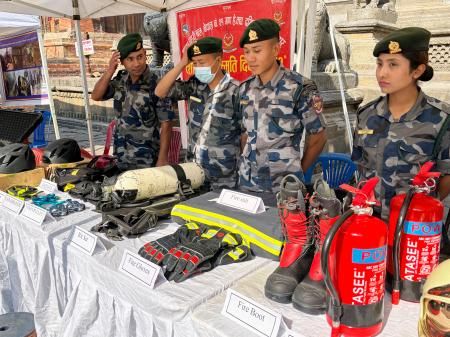Ten Years After: Nepal Earthquake's Legacy – Resilience, Reconstruction, and the Road Ahead
April 25th, 2015, a date etched in the memory of Nepal. A devastating 7.8 magnitude earthquake ripped through the country, leaving a trail of destruction and claiming thousands of lives. Ten years later, we reflect on the earthquake's lasting impact, examining the progress made in reconstruction, the challenges that remain, and the lessons learned about disaster preparedness and resilience.
A Decade of Recovery: Progress and Challenges
The 2015 Nepal earthquake was a catastrophic event, causing widespread damage to infrastructure, including homes, schools, and hospitals, particularly in Kathmandu and surrounding areas. The immediate aftermath saw a massive international relief effort, with aid pouring in from across the globe. However, the path to recovery has been long and complex.
Reconstruction Efforts: A Mixed Bag
While significant progress has been made in rebuilding homes and infrastructure, challenges persist:
- Slow progress in reconstruction: Bureaucratic hurdles, funding constraints, and logistical complexities hampered the speed of reconstruction, leaving many still without permanent housing.
- Uneven distribution of aid: The distribution of aid and resources wasn't always equitable, leading to disparities in recovery across different regions and communities.
- Vulnerability to future disasters: While some infrastructure has been upgraded to be more earthquake-resistant, much of Nepal remains vulnerable to future seismic events. This highlights the ongoing need for robust building codes and disaster preparedness strategies.
The Human Cost: Trauma and Resilience
Beyond the physical destruction, the earthquake had a profound psychological impact on the Nepali population. Many individuals and communities continue to grapple with the trauma of loss and displacement. However, the resilience of the Nepali people has also been remarkable. Communities have come together, supporting each other through collective efforts to rebuild their lives and livelihoods.
- Mental health support: Access to adequate mental health services remains a significant challenge, necessitating increased investment in trauma-informed care.
- Community-led recovery: The strength and resilience displayed by local communities have been crucial in driving the recovery process. Their participation in reconstruction projects and initiatives has been instrumental.
- Economic recovery: The earthquake severely impacted Nepal's economy. While recovery is underway, the long-term economic consequences, particularly for vulnerable populations, require continued attention.
Lessons Learned and the Path Forward
The 2015 Nepal earthquake served as a stark reminder of the importance of disaster preparedness and resilient infrastructure. Key lessons learned include:
- Strengthening building codes: Implementing and enforcing strict building codes that incorporate earthquake-resistant design is crucial.
- Improving early warning systems: Investing in robust early warning systems can help minimize casualties and damage during future earthquakes.
- Community-based disaster risk reduction: Engaging communities in disaster preparedness initiatives fosters greater resilience and effectiveness.
- Long-term investment in infrastructure: Sustainable and resilient infrastructure is essential for long-term recovery and development.
Looking Ahead: A Focus on Resilience
Ten years after the devastating earthquake, Nepal continues its journey towards recovery and resilience. Continued investment in infrastructure, disaster preparedness, and community empowerment is crucial to ensure that future generations are better protected from the devastating effects of natural disasters. The international community also has a continued role to play in supporting Nepal's long-term recovery and development efforts. The resilience shown by the Nepali people is a testament to the human spirit, but sustainable progress requires sustained commitment and collaboration.
[Call to Action]: Learn more about organizations supporting Nepal's recovery and consider contributing to their efforts. You can find links to relevant charities and NGOs through a simple online search. Together, we can help build a more resilient and prosperous future for Nepal.
